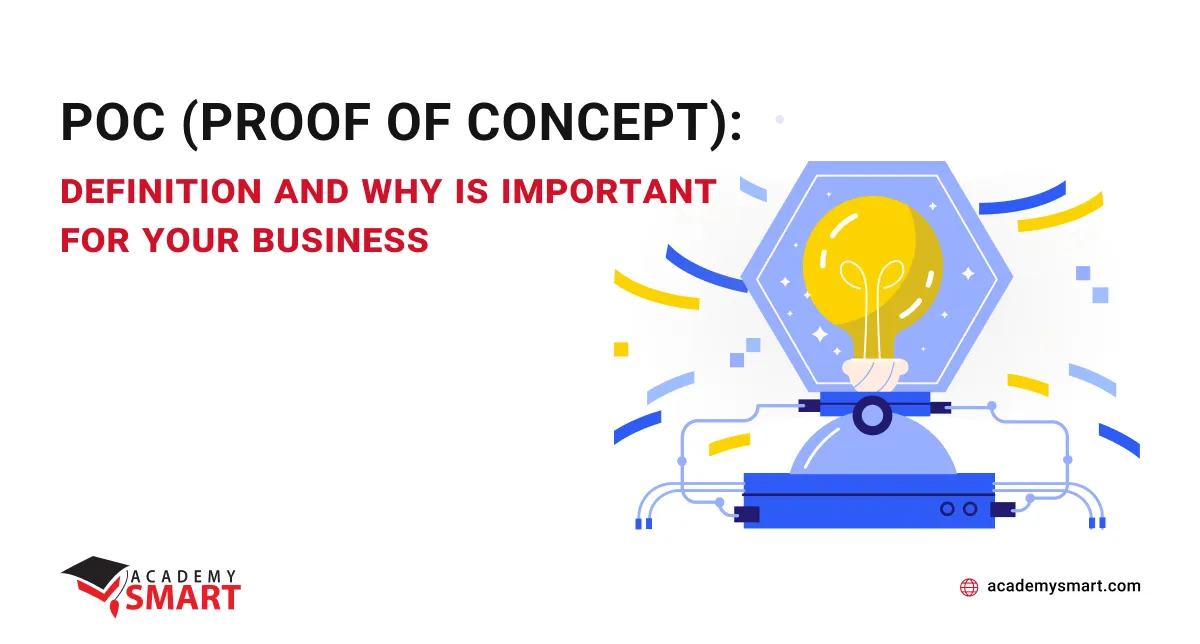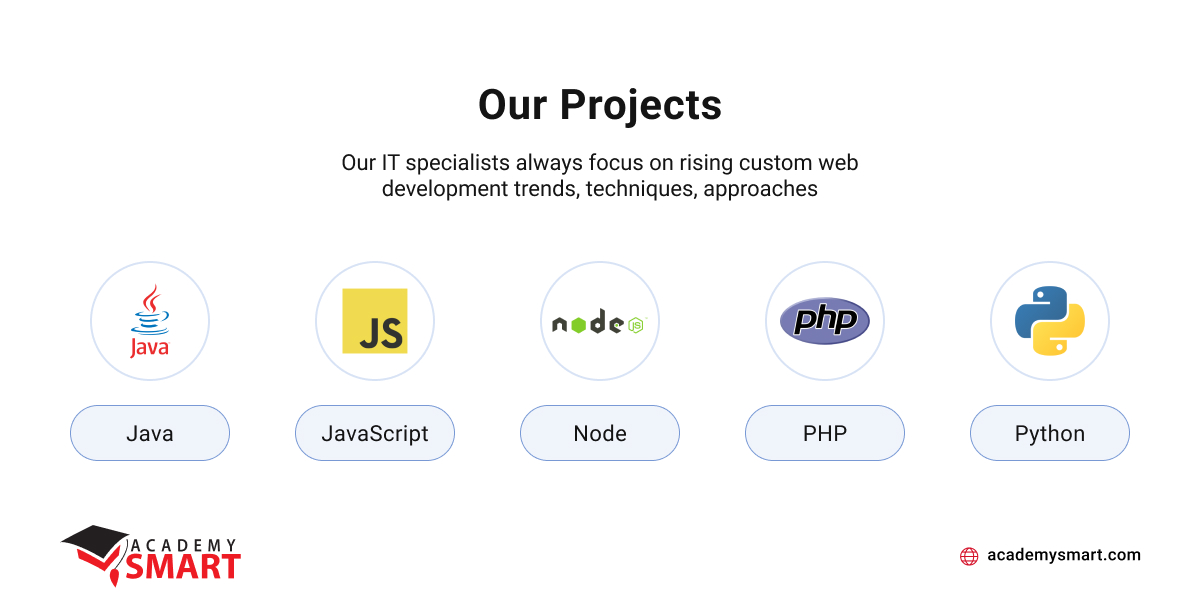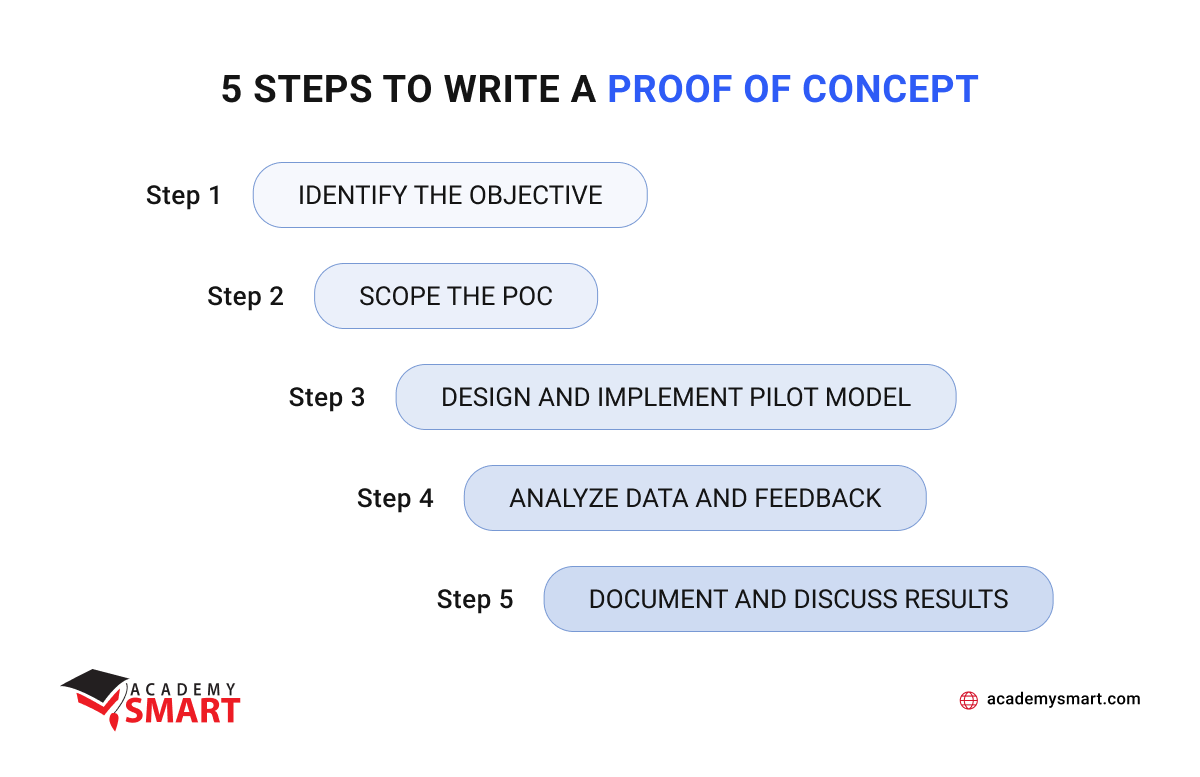
POC (Proof of Concept): definition and why is important for your business
Contents
A good business idea implies decent earnings and substantial competitive advantages. Of course, the more original and innovative the idea is, the better it seems. And perhaps, the only obstacle that can prevent a good idea from becoming perfect is its feasibility in practice.
Since we are discussing creating quality software here, certain technical limitations still inherent in modern information systems can disturb the idea from becoming a full-fledged application. It is especially true for innovative solutions with previously unused technology combinations.
Unsurprisingly, the agile software development methodology has a Proof of concept procedure to identify technical discrepancies and other potential app problems. This article will explain what it is and how creating a POC differs from a prototype and MVP.
What does Proof of Concept mean
What is POC? Proof of Concept (POC) refers to a demonstration that is created to validate the feasibility and potential of a concept, idea, or technology. It is a preliminary step to assess whether a particular solution or approach will work as intended before committing planned resources to full-scale software development.
What does POC stand for? Its primary purpose in our context is to test a concept’s fundamental assumptions and technical aspects. It allows developers, stakeholders, and decision-makers to gain valuable insights into the viability of a proposed solution, identify potential challenges or limitations, and evaluate the risks associated with its implementation.
It should be noted that POC development is not necessary for all types of software applications. The need for a proof of concept largely depends on the application’s complexity, novelty, and risk. Here are some factors to consider when deciding if a POC is recommended:
- It can be valuable if the software application involves complex technical specification, cutting-edge technologies, or innovative approaches. It helps validate the reality of implementing such elements before committing to the development process.
- It can help identify and mitigate significant technical risks, such as integrating with unfamiliar systems, utilizing emerging technologies, or addressing challenging performance requirements.
- It can provide empirical evidence to validate assumptions and reduce uncertainty if the software concept involves untested ideas. It allows stakeholders to assess the concept’s potential before investing.
- It can help optimize resource allocation if resource constraints, time limitations, or budget considerations exist. It allows developers to find potential roadblocks early on and decide whether to proceed with full-scale development.
So, what does proof of concept mean in practice? A POC typically addresses specific questions or challenges related to the concept. It may involve developing a small-scale software version, implementing a subset of critical functionalities, or utilizing relevant technologies to test their compatibility and performance. It focuses on demonstrating the core functionality of the tested idea while excluding other non-essential features, even if they are crucial for the application. This scaled-down version aims to test the technical possibility and validate the basic premise of the concept.
While the demonstration in a POC may sometimes serve as a starting point for further development or refactoring, it is important to note that the POC itself is not intended to be production-ready code. Its primary goal is to check concepts. Therefore, the code written for a POC should not be optimized, scalable, or structured like a production-ready software solution.
POCs are typically developed quickly without focusing on factual software purposes. By avoiding unnecessary complexity and focusing on the essential aspects, developers can rapidly explore and test the problem area, assess potential technical challenges, and gather stakeholder feedback.
A full-scale software solution requires extensive development efforts, thorough testing, and careful architectural decisions. That is contrary to the POC meaning and its practical goals. The fast development of a test model can show that the hypotheses are technically tricky, not cost-effective, or impossible yet, for example. Therefore, POC is singled out as a separate and utilitarian stage in creating a product, and its code is practically not used in the future.
Example of Proof of Concept
Let’s explore what proof of concept in software development is with the help of a modern example.
In the e-learning industry, there is a growing interest in implementing virtual reality technology (VR) today to enhance the learning experience. However, there may be concerns about the feasibility and effectiveness of VR in delivering educational content in particular cases.
Let’s imagine what the customers of the e-learning application and their developers might be worried about:
- Technical complexity and compatibility
Implementing VR technology in e-learning platforms may require specialized hardware, software, and technical expertise. Moreover, ensuring compatibility with various VR devices and platforms can be challenging. - Content development
Creating high-quality educational content for VR experiences requires additional resources and expertise. Concerns may revolve around the cost and time required to develop VR-specific content, such as designing immersive environments, interactive simulations, or 3D models that effectively convey educational concepts. - Cost and accessibility
VR equipment can be costly, and ensuring accessibility for all learners may pose a challenge. Concerns may arise about the financial feasibility of providing VR devices or access to VR-enabled environments to many users, particularly in resource-constrained educational settings.
Exploring the first problem area, the POC can focus on developing a small-scale VR-enabled module and testing its compatibility with different VR devices, platforms, and operating systems. It would help assess the technical workability, performance, and compatibility challenges in integrating VR into the existing e-learning infrastructure. This way, developers can identify technical complexities, compatibility issues, or performance limitations. Solutions may involve:
- Optimizing VR software components.
- Refining hardware requirements.
- Selecting VR technologies that offer better cross-platform support.
The POC can also help determine the resources and technical expertise required for successful integration.
The second example of proof of concept can include developing a limited set of VR-specific educational content, such as interactive simulations. It aims to evaluate the effectiveness of the content in conveying educational concepts and assess the effort and resources required for content creation. Based on the testers’ feedback, it would help to improve the content development process, identify more efficient content creation areas, or explore partnerships with content makers to enhance the educational offerings.
For the third problem, the POC can explore different cost-effective options for VR equipment, such as testing with affordable VR devices or utilizing cloud-based VR platforms. It can also involve assessing the scalability and accessibility of VR experiences for a wider audience. By conducting the POC, the challenges and cost implications can be evaluated. That may lead to exploring alternative VR devices, negotiating partnerships with new vendors, or considering subscription-based models for access to VR content.
This illustrative case perfectly demonstrates what is a proof of concept. It comprises a range of activities, including research, user experience design, information system integration, targeted code implementation, and responsible management decision-making. Several of the applications we developed also started with POC, allowing us to choose the right product strategy early on. You can get acquainted with their examples in this video presentation.
Why is POC important
As pointed out earlier, POC plays a significant role in developing innovative start-ups and sophisticated enterprise software. Of course, you should test any unusual idea of exploiting trivial technical solutions for viability. But what if the expertise within the company is not enough for full-fledged testing? This problem is solved by attracting third-party professional IT resources from outstaffers or outsourcing companies.
According to the definition of proof of concept, you may need it for the following reasons:
- Feasibility validation
POCs serve as an approval mechanism to assess the workability of an idea, technology stack, or solution. They provide practical evidence and data to support decision-making, ensuring that the proposed idea can be successfully implemented. - Proof of value
POCs demonstrate the potential value of a concept. Before starting full-scale development, stakeholders can assess the benefits, market fit, and competitive advantage. POCs help justify further investment by showcasing the ROI potential. - Risk reduction
POCs help mitigate risks and optimize resource allocation by identifying potential challenges, technical restrictions, and essential issues early in development. It helps avoid unnecessary expenses on ideas that may not be realized or align with business objectives.
As the practice of our portfolio testifies, it is difficult to overestimate the benefits of the clever use of the POC tool.

Portfolio of Academy Smart
Proof of Concept vs Prototype
Often the test code of the POC is referred to as a prototype, implying that it is a pilot version of the software. However, strictly speaking, this seems wrong since the prototype is a milestone in creating a specific product, the development plan and functionality of which have already been confirmed.
Finding out whether the feature will work at all for the prototype is no longer a task. It demonstrates how the application can work, and its versions show possible user experience options. Typically, the prototype stage follows a successful proof of concept. However, it’s not uncommon for complex software to simultaneously create a prototype for approved features and experiment with promising ideas utilizing POC. In general, the difference between POC and prototype can be described as follows:
- Proof of concept aims at the viability of a concept or technology, while a prototype demonstrates a specific solution’s functionality and user experience.
- POC has a limited scope, focusing on specific aspects or functionalities, while a prototype encompasses a larger set of features.
- Proof of concept is generally early-stage, preceding, or guiding prototype development.
- POC is usually built within a relatively short time frame, while a prototype has a longer development cycle to create a more comprehensive representation of the final product.
- Proof of concept primarily targets technical stakeholders and decision-makers, while the prototype audience is much wider, including end-users and potential investors.
- POC provides a high-level overview to demonstrate the core concept, while the prototype shows a more detailed representation of the final product, including user interface design, interactions, and features.
- Proof of concept brings minimal user interaction, while the prototype provides a closer simulation of the final product.
- At last, proof of concept vs prototype usually requires less effort and resources.

Main differences between Prototype and POC
What is the difference between POC and MVP
There is an even bigger difference between POC and MVP, but these software milestones are also sometimes confused, probably due to short abbreviations. Enough has already been said about POC, so let’s recall that MVP is, although limited, a fully working version of the application that enters the market to receive feedback directly from its target audience. Its goal is to test how good and in demand what is already done and determine how to make the application more attractive and profitable. So, if POC is the initial stage of work on a project, then MVP precedes the software’s final release. If we compare POC and MVP in detail, we will see the following:
- POC tests assumptions, explores technical feasibility, and reduces risks before full-scale development, while MVP validates a business hypothesis and the market potential of a software product.
- Proof of concept focuses on problem areas, while MVP contains the features required to deliver customer value.
- POC precedes the prototype and MVP stages.
- The proof of concept’s model is created fast, while MVP building requires several months or more.
- POC is targeted towards owners and developers, while MVP is intended for early adopters or a specific target market segment.
- Proof of concept demonstrates the implementability of an idea, while MVP offers detailed functionality and a representation of the final product.
- POC allows limited user interaction, while MVP enables users to engage entirely with the product and provide feedback.
- Finally, proof of concept vs MVP needs much fewer resources and programming efforts, but the code created at this stage is often not applicable later.
As you can see, each milestone has its own unique goals and objectives. But while a prototype and MVP are required for every software application that strives for market success, the POC is most often needed for technically complex and innovative enterprise products.

Key differences between MVP and POC
5 steps to write a Proof of Concept
Writing a POC is the responsibility of the technical experts within the company or the partnering development team. To successfully test ideas, you need an understanding of the essence of emerging technical contradictions, knowledge of relevant information systems, and solid expertise in programming. Of course, coping with this task without a suitable technical background is impossible. Therefore, to implement innovative product features, sometimes it is necessary to change IT providers in search of specialists in advanced industries.
So, how to write a proof of concept in a particular case?
Step 1. Identify the objective
Start by identifying the problem area that arises with your project idea. Determine which elements and systemic relationships of future software require your close attention, creating a zone of uncertainty and potential risks. Find out what you need to uncover technical inconsistencies and roadblocks in development. Outline ways that would allow you to evaluate the efficiency of your concept, its performance, and cost-effectiveness. Record this as a list of goals that your POC model should meet.
Step 2. Scope the POC
By scoping the POC, you create a targeted framework that enables a deeper concept exploration, facilitates effective validation of uncertainties and risks, and ensures a manageable development and evaluation process. This step sets the stage for the subsequent design and implementation of the POC model.
Determine the essential features that are crucial to validating the idea with only focus on the core aspects that align with the POC’s objectives. Clearly outline what features will be included in the proof of concept and what aspects will be intentionally excluded.
Consider the technical contradictions identified in the previous step, defining how the scoped functionalities of the POC will check their possibility of implementation and solve their risks. Set which way integration, compatibility, or performance areas must be tested and proven and establish suitable KPI metrics to asset the results.
Step 3. Design and implement pilot model
At this point, the proof of concept enters a stage where the concept is brought to life, allowing stakeholders to interact with a tangible representation of the proposed solution. Like any other software, the pilot model goes through the design, iterative coding, quality testing, and deployment in an information environment similar to the app’s specification requirements. But considering the specifics of the POC objectives, the phase of creating a test model is relatively short.
Step 4. Analyze data and feedback
After implementing the pilot model, the next step is to analyze the data and feedback gathered throughout the POC process. That includes carefully examining the information obtained from user interactions, system stability and compatibility checking, and any other crucial tests.
Thoroughly analyze the collected data to gain insights into various aspects of the proof of concept. That may involve assessing user engagement, error rates, or other relevant metrics determined during the scoping phase. Compare the outcomes and performance indicators against the desired objectives to determine whether the POC has achieved its intended purpose. By examining these data, patterns, trends, and areas of improvement can be identified.
Explore the feedback from users, stakeholders, or other parties involved in the POC. Consider their observations, suggestions, and concerns regarding the concept, functionalities, and overall user experience. Identify the strengths and weaknesses of the pilot model based on the data analysis and feedback. Use these insights to inform iterative refinement of the concept.
Step 5. Document and discuss results
Document the process, findings, and outcomes of the POC. That will ensure that no experiment aspect has been missed and you have a holistic view of the situation, having all the information at your disposal.
Prepare a summary report or presentation highlighting the objective, the pilot model, the analyzed data, and the results. Discuss it with stakeholders to gather additional insights and make informed decisions about the following actions.

How to write a POC in 5 steps
How Academy SMART can help you
Our IT company has been creating high-end software for enterprises for more than 13 years, focusing on developing modern solutions in machine learning and artificial intelligence, augmented and virtual reality, latest cloud and web technologies, etc. Our experts are ready to help you with proof-of-concept challenges and full-stack software development from scratch to final release.
With the assistance of our recruiting department, you may select experienced programmers with broad expertise, QA testers, business analysts, and project managers to staff a successful crew for your software product. Feel free to contact us and order an efficient and creative development team to move your business forward.
Proof of Concept: Frequently Asked Questions
What is POC for startup?
It demonstrates the viability and market potential of the startup’s concept before seeking investment or starting full-scale development.
Who writes a Proof of Concept?
A POC is typically written by technical experts of the development team in collaboration with stakeholders and decision-makers.
Book a free consultation

Reach out to start talking today!











